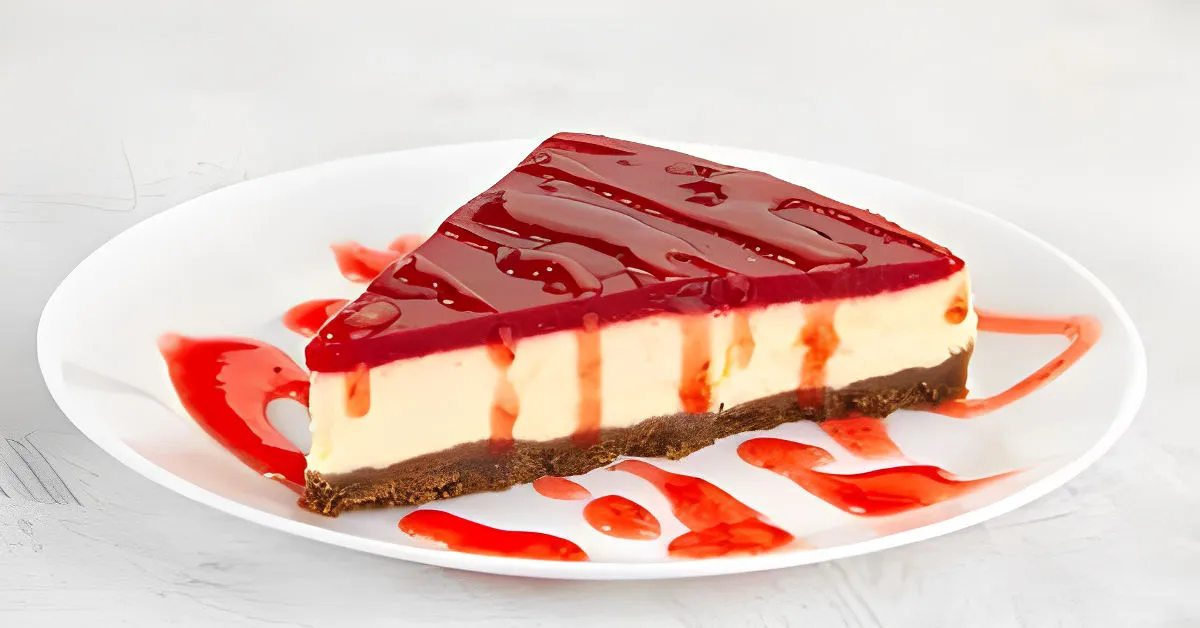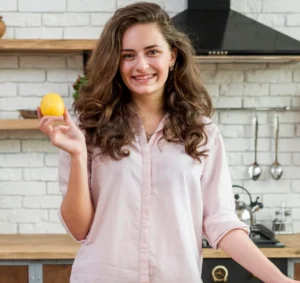Diving into the world of cheesecake is akin to embarking on a culinary adventure, one that spans continents, cultures, and centuries. From the dense, rich textures of a classic New York-style cheesecake to the airy, fluffy lightness of a Japanese-style cheesecake, this beloved dessert comes in myriad forms, each with its own unique charm and history. In this comprehensive exploration, we’ll unravel the mysteries behind the two main types of cheesecake, delve into other popular variations, and offer insights into the essential components that make up this delectable treat. Whether you’re a seasoned baker or a curious foodie, this article promises to enhance your understanding and appreciation of cheesecake, guiding you through its creamy layers and beyond.
Introduction to Cheesecake Varieties
Cheesecake, in its essence, is a testament to the transformative power of simple ingredients. At its core, this dessert combines cheese, sugar, and eggs into something far greater than the sum of its parts. The journey of cheesecake begins in ancient Greece, believed to be a source of energy for athletes at the first Olympic games. Fast forward to the present, and cheesecake has evolved into a global phenomenon, with each region adding its own twist to the classic recipe.
The allure of cheesecake lies not just in its rich, indulgent flavor but also in its versatility. From the tangy and dense offerings found in New York’s delis to the light and airy versions adored in Tokyo’s cafes, cheesecake can be adapted to suit any palate. Yet, for all its variations, cheesecake can broadly be categorized into two main types: the classic New York-style cheesecake and the ethereal Japanese-style cheesecake. But, oh, there’s so much more to the story!
Importance of Understanding Different Types
Understanding the different types of cheesecake isn’t just an exercise in culinary classification; it’s a doorway to a richer baking and tasting experience. By appreciating the nuances that distinguish one style from another, you can better select the perfect cheesecake for any occasion, be it a lavish celebration or a cozy night in. Moreover, this knowledge empowers you to experiment with confidence, perhaps even leading you to create your own signature variation.
So, whether you’re drawn to the creamy, dreamy texture of a classic cheesecake or the fluffy, cloud-like consistency of its Japanese cousin, join us on this delicious journey. As we slice through the history, techniques, and secrets behind these beloved desserts, you’ll discover not just recipes, but stories – stories of cultures, innovations, and the universal love for a slice of cheesecake.
Other Popular Types of Cheesecake
No-Bake Cheesecake
In the realm of cheesecakes, the no-bake cheesecake is a beacon of simplicity and convenience. This version is perfect for those who seek the creamy bliss of cheesecake without the commitment to baking. Characterized by its smooth and homogenous texture, the no-bake cheesecake is a testament to the magic that can happen with just a few ingredients and a refrigerator.
The secret to its fuss-free preparation lies in the absence of eggs and the use of gelatin or condensed milk to stabilize the mixture, ensuring it holds its shape once chilled. This method not only simplifies the process but also opens up a world of possibilities for flavors and mix-ins, from tangy lemon to decadent chocolate.
No-bake cheesecakes are a celebration of texture and taste, offering a cool, creamy dessert option that’s especially appealing during the warmer months. Whether you’re hosting a summer barbecue or looking for an easy dessert for a festive occasion, the no-bake cheesecake is a versatile choice that promises to delight.
Ricotta Cheesecake
Venturing further into the cheesecake spectrum, we encounter the ricotta cheesecake. This variant introduces a delightful twist to the traditional cheesecake formula by substituting cream cheese with ricotta, resulting in a dessert that’s lighter and possesses a slightly grainy texture. The ricotta cheesecake draws inspiration from Italian culinary traditions, where the use of fresh, high-quality ricotta cheese elevates the dessert to new heights of flavor and sophistication.
Ricotta cheesecake is not just a dessert; it’s a bridge between the ancient Roman cheesecakes, which were often made with honey and bay leaves, and the modern palate’s preference for subtlety and refinement. The key to mastering this variation lies in the quality of the ricotta used—fresh, artisanal ricotta will yield a cheesecake that’s both rich and airy, with a delicate balance of sweetness.
Vegan Cheesecake
The vegan cheesecake emerges as a beacon of inclusivity in the dessert world, proving that the joy of cheesecake can be enjoyed by all, regardless of dietary preferences. This version eschews traditional dairy ingredients in favor of plant-based alternatives like soaked cashews, coconut milk, or vegan cream cheese, creating a dessert that’s both ethical and indulgent.
Vegan cheesecakes often incorporate citrus to mimic the tangy profile of their dairy-based counterparts, while the crust can range from classic graham crackers to inventive options like nuts and dates. The result is a dessert that’s not only compassionate but also bursting with creativity and flavor.
Each of these cheesecake variations—from the simplicity of a no-bake cheesecake to the rustic charm of a ricotta cheesecake, and the innovative spirit of a vegan cheesecake—highlights the versatility and universal appeal of this beloved dessert. Whether you’re a traditionalist or an adventurer, there’s a cheesecake out there that’s perfect for you.
Explore vegan cheesecake recipes and more at The Vegan Society, where you’ll find a treasure trove of plant-based delights that promise to inspire and satisfy.
Cheesecake Components and Customizations
Crust Variations
The foundation of any great cheesecake, the crust, can dramatically influence its overall taste and texture. Traditionally, a cheesecake crust is made from crushed graham crackers mixed with butter, but the possibilities for customization are endless. From the crunch of a cookie crumb base to the nutty richness of a ground almond or pecan crust, each variation offers a unique contrast to the creamy filling above.
For those looking to experiment, consider using crushed Oreos for a chocolatey base, or ginger snaps for a crust with a bit of spice. The key is to find a balance that complements the cheesecake’s flavor without overpowering it. A well-chosen crust not only adds texture and depth but also sets the stage for the filling, making each bite a harmonious blend of flavors and textures.
Toppings and Flavors
The versatility of cheesecake extends beyond its crust and filling to an array of toppings and flavors that can transform a simple cheesecake into a show-stopping dessert. Cheesecake toppings range from fresh fruit and berry compotes to rich caramel or chocolate sauces, allowing for endless creativity in presentation and taste.
Incorporating flavors into the cheesecake batter itself is another way to customize this dessert. Mix-ins like lemon zest, chocolate chips, or swirls of raspberry puree can elevate the cheesecake experience, offering new layers of flavor with every forkful. For a truly decadent treat, consider topping your cheesecake with a layer of sweetened sour cream or a sprinkle of toasted coconut and chopped nuts.
The beauty of cheesecake lies in its ability to be both a blank canvas and a complex masterpiece. Whether you prefer the classic simplicity of a New York-style cheesecake with a strawberry topping or the bold innovation of a chocolate-infused vegan cheesecake, the opportunities for customization are limited only by your imagination.
Mastering the art of cheesecake customization requires not just creativity but also a willingness to experiment. Don’t be afraid to mix and match crusts, fillings, and toppings to discover your perfect cheesecake combination. Remember, the best cheesecake is the one that reflects your personal taste and brings joy to those who share it.
For those eager to dive deeper into the world of baking and dessert customization, King Arthur Baking Company’s guide to baking offers a wealth of tips, techniques, and recipes. Whether you’re a novice baker or a seasoned pro, their expert advice can help you achieve cheesecake perfection.
FAQs About Cheesecake
Cheesecake, with its rich history and diverse variations, naturally inspires a myriad of questions from both baking novices and seasoned dessert aficionados alike. This section aims to address some of the most common queries, shedding light on the intricacies of cheesecake preparation, serving, and storage, all while sprinkling in expert tips to elevate your cheesecake game.
Frequently Asked Questions
-
What’s the secret to a crack-free cheesecake?
Ah, the bane of many bakers—cheesecake cracks. The key to avoiding this culinary faux pas lies in gentle baking and patience. Bake your cheesecake in a water bath to ensure even heat distribution and avoid sudden temperature changes by letting it cool slowly in the oven. Remember, a little jiggle in the center means it’s perfectly done.
-
Can I freeze cheesecake?
Absolutely! Cheesecake freezes beautifully. Wrap it tightly in plastic wrap, then again in foil, and it will keep its delectable texture for up to two months. Just thaw it overnight in the refrigerator before serving. This trick is a lifesaver for make-ahead dessert planning.
-
How do I achieve the perfect cheesecake texture?
The texture of your cheesecake hinges on the mixing process. Overmixing can incorporate too much air, leading to a soufflé-like texture and potential cracks. Mix just until your ingredients are blended, and always start with room-temperature ingredients to ensure a smooth, creamy consistency.
-
What are some creative cheesecake flavors I can try?
The world of cheesecake flavors is vast and varied. Beyond the classic vanilla or lemon, why not explore combinations like salted caramel and chocolate, pumpkin spice for a fall twist, or even a savory cheesecake with herbs and sun-dried tomatoes for an appetizer? The only limit is your imagination.
-
How do I serve cheesecake cleanly?
For picture-perfect slices, dip your knife in hot water and wipe it dry between cuts. This method ensures clean, sharp slices that showcase your cheesecake’s creamy texture.
-
Can cheesecake be made without a springform pan?
While a springform pan is traditional, it’s not mandatory. You can use a regular cake pan lined with parchment paper for easy removal. Just be sure to adjust your baking time accordingly, as the depth and material of your pan can affect how the cheesecake cooks.
-
How long does cheesecake last in the fridge?
A properly stored cheesecake can last up to 5 days in the refrigerator. Cover it loosely with foil or plastic wrap to protect it from absorbing other flavors in the fridge. However, the fresher it is, the better it tastes, so don’t wait too long to indulge.
-
Why do some cheesecakes require a water bath, and can I skip it?
A water bath, or bain-marie, is a baking technique used to create a gentle and uniform heat around the cheesecake, preventing its surface from cracking and ensuring the inside cooks evenly without drying out. The steam from the water bath also adds moisture to the oven, further aiding in a smooth texture. While some recipes, especially those for denser cheesecakes, might forgo the water bath, using one is crucial for achieving the perfect texture in delicate varieties like the New York-style or Japanese-style cheesecake. If you’re in a pinch, placing a pan of water on the rack below the cheesecake can also help add moisture to the oven, though the effect is not as pronounced.
-
How can I add a personal touch to my cheesecake?
Personalizing your cheesecake is all about creativity and experimenting with flavors and toppings. Consider infusing the cheesecake batter with your favorite liqueurs, zests, or extracts to add depth of flavor. Alternatively, mix-ins like fruit swirls, chocolate chips, or nuts can introduce new textures and tastes. For toppings, the sky’s the limit: homemade fruit compotes, decadent ganaches, fresh berries, or even a brûléed sugar topping for a crispy contrast. Don’t be afraid to mix and match to find your perfect combination, making your cheesecake a true reflection of your personal taste and culinary flair.
Conclusion and Final Thoughts
As our journey through the world of cheesecakes comes to a close, it’s clear that this beloved dessert transcends simple categorization. From the dense and creamy New York-style cheesecake to the light and airy Japanese-style cheesecake, and the myriad variations in between, cheesecake is a testament to the versatility and creativity of bakers around the globe. Each type, with its unique textures, flavors, and preparation methods, offers a different experience, proving that there’s a cheesecake out there for every palate and occasion.
The exploration of cheesecake doesn’t end here, though. The beauty of this dessert lies in its adaptability. Armed with the knowledge of basic types and techniques, you’re now equipped to experiment with your own recipes, perhaps even creating a new variation that reflects your personal taste and culinary creativity. Remember, the best cheesecake is the one that brings joy to you and those you share it with.
So, whether you’re whipping up a no-bake cheesecake for a summer picnic, a rich and tangy New York-style for a festive celebration, or experimenting with vegan ingredients for a plant-based treat, the world of cheesecake is yours to explore. Embrace the journey, and let each cheesecake you create be a celebration of flavor, texture, and the simple joy of baking.


